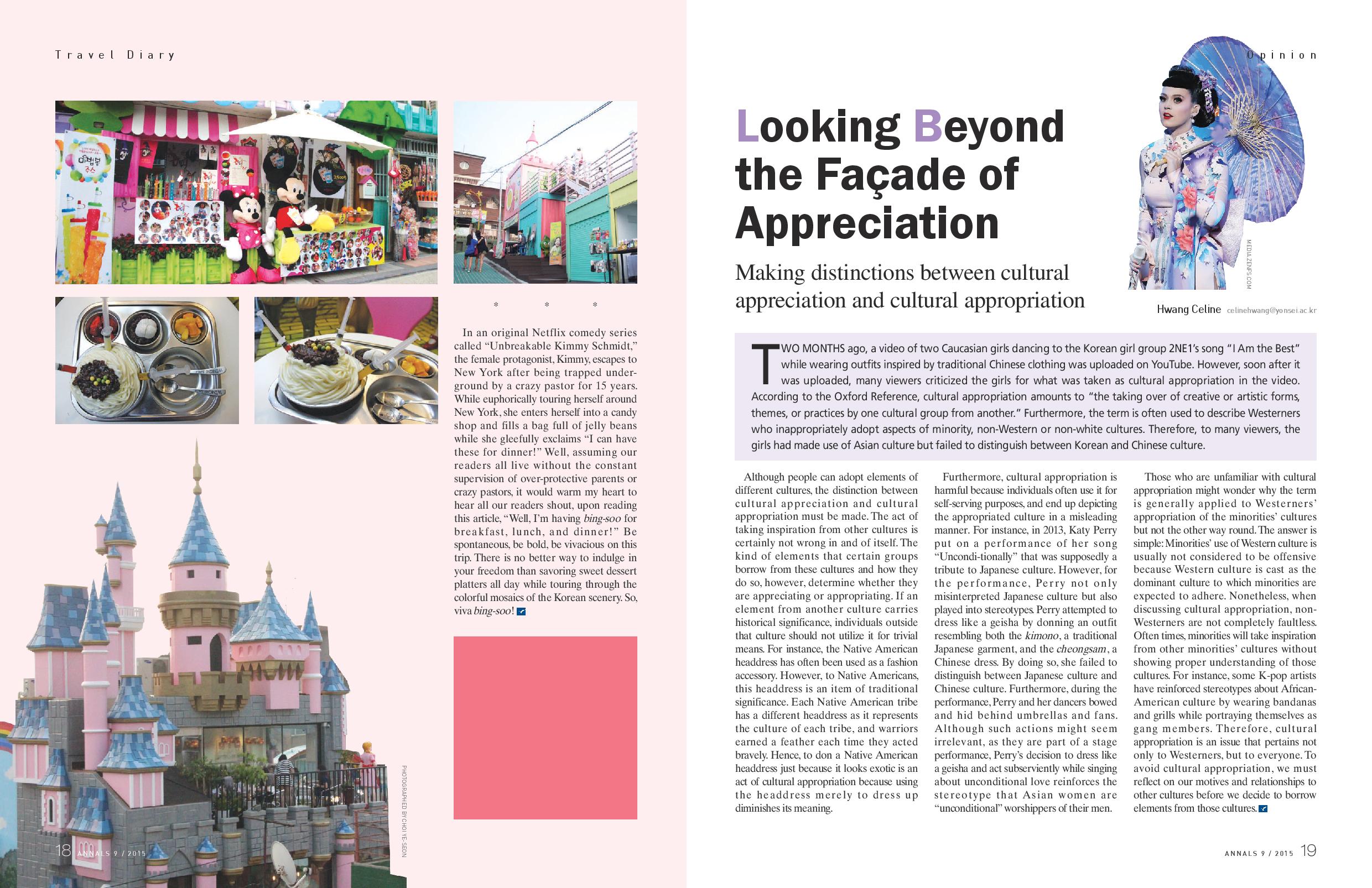TWO MONTHS ago, a video of two Caucasian girls dancing to the Korean girl group 2NE1’s song “I Am the Best” while wearing outfits inspired by traditional Chinese clothing was uploaded on YouTube. However, soon after it was uploaded, many viewers criticized the girls for what was taken as cultural appropriation in the video. According to the Oxford Reference, cultural appropriation amounts to “the taking over of creative or artistic forms, themes, or practices by one cultural group from another.” Furthermore, the term is often used to describe Westerners who inappropriately adopt aspects of minority, non-Western or non-white cultures. Therefore, to many viewers, the girls had made use of Asian culture but failed to distinguish between Korean and Chinese culture.
Although people can adopt elements of different cultures, the distinction between cultural appreciation and cultural appropriation must be made. The act of taking inspiration from other cultures is certainly not wrong in and of itself. The kind of elements that certain groups borrow from these cultures and how they do so, however, determine whether they are appreciating or appropriating. If an element from another culture carries historical significance, individuals outside that culture should not utilize it for trivial means. For instance, the Native American headdress has often been used as a fashion accessory. However, to Native Americans, this headdress is an item of traditional significance. Each Native American tribe has a different headdress as it represents the culture of each tribe, and warriors earned a feather each time they acted bravely. Hence, to don a Native American headdress just because it looks exotic is an act of cultural appropriation because using the headdress merely to dress up diminishes its meaning.
Furthermore, cultural appropriation is harmful because individuals often use it for self-serving purposes, and end up depicting the specific culture in a misleading manner. For instance, in 2013, Katy Perry put on a performance of her song “Unconditionally” that was supposedly a tribute to Japanese culture. However, for the performance, Perry not only misinterpreted Japanese culture but also played into stereotypes. Perry attempted to dress like a geisha by donning an outfit resembling both the kimono, a traditional Japanese garment, and the cheongsam, a Chinese dress. By doing so, she failed to distinguish between Japanese culture and Chinese culture. Furthermore, during the performance, Perry and her dancers bowed and hid behind umbrellas and fans. Although such actions might seem irrelevant, as they are part of a stage performance, Perry’s decision to dress like a geisha and act subserviently while singing about unconditional love reinforces the stereotype that Asian women are “unconditional” worshippers of their men.
Those who are unfamiliar with cultural appropriation might wonder why the term is generally applied to Westerners’ appropriation of the minorities’ cultures but not the other way round. The answer is simple: Minorities’ use of Western culture is usually not considered to be offensive because Western culture is cast as the dominant culture to which minorities are expected to adhere. Nonetheless, when discussing cultural appropriation, non-Westerners are not completely faultless. Often times, minorities will take inspiration from other minorities’ cultures without showing proper understanding of those cultures. For instance, some K-pop artists have reinforced stereotypes about African-American culture by wearing bandanas and grills while portraying themselves as gang members. Therefore, cultural appropriation is an issue that pertains not only to Westerners, but to everyone. To avoid cultural appropriation, we must reflect on our motives and relationships to other cultures before we decide to borrow elements from those cultures.


